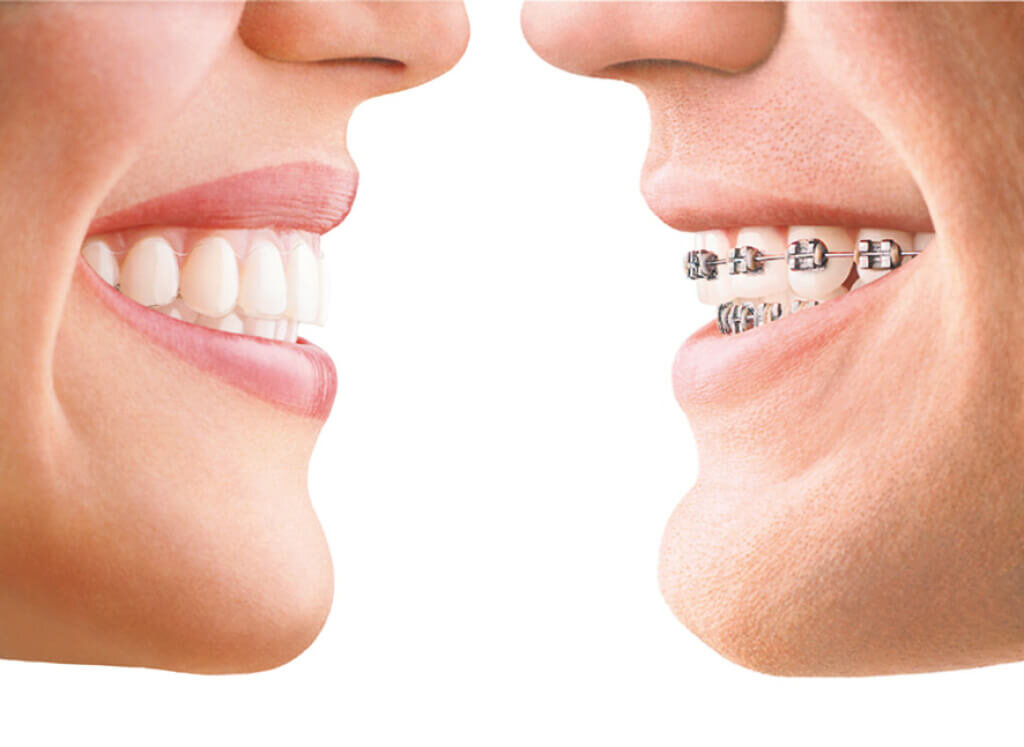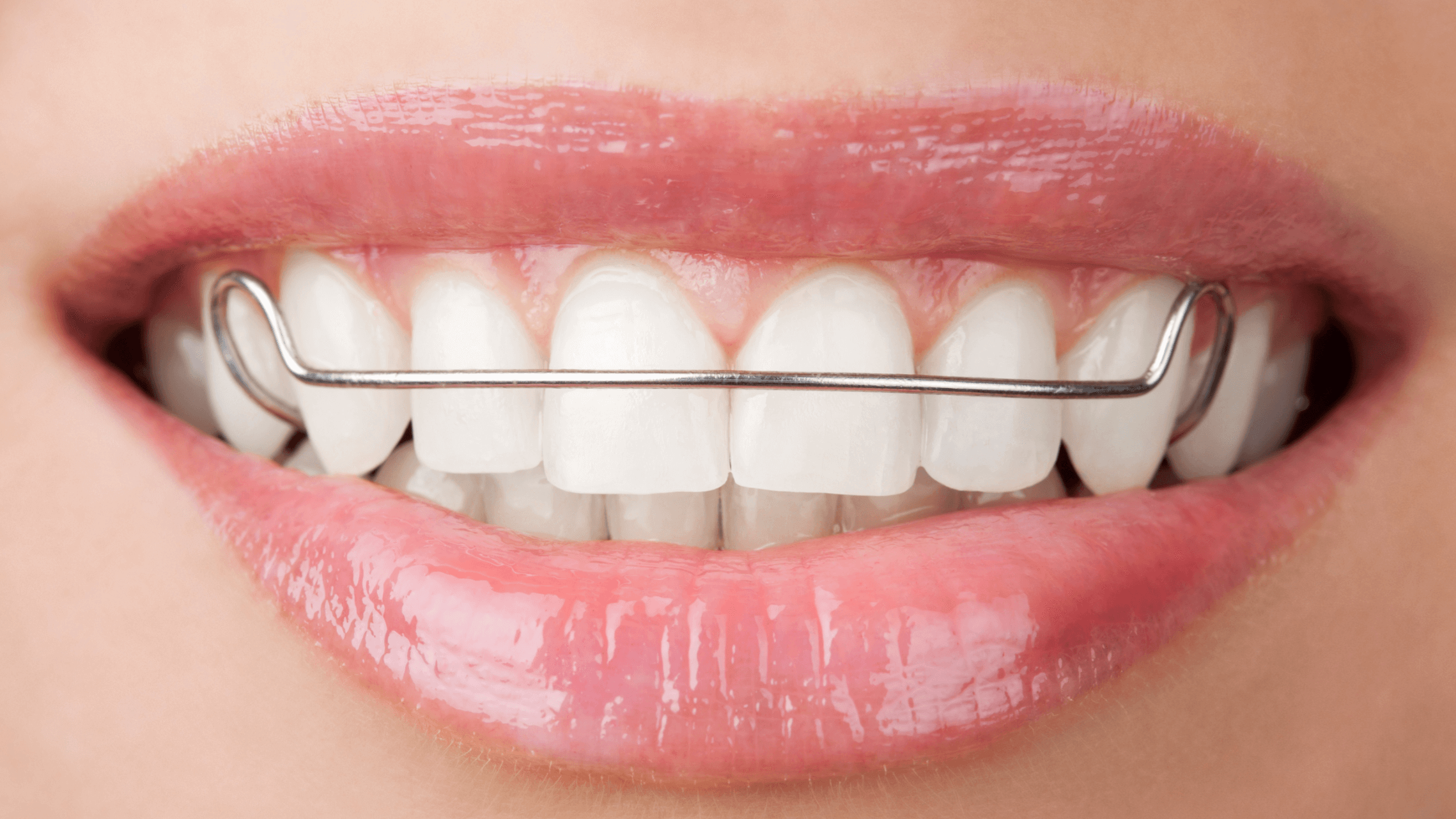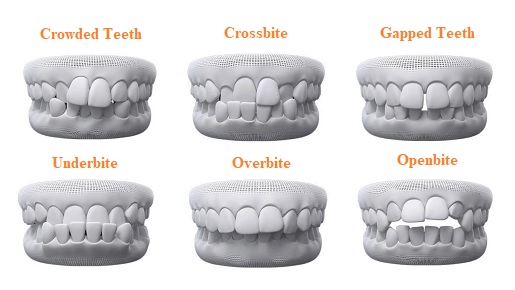The Ultimate Comparison: Invisalign vs. Traditional Braces for Adults
The Ultimate Comparison: Invisalign vs. Traditional Braces for Adults
Blog Article
Invisalign vs. Conventional Braces: Which Choice Is Right for You?
When thinking about orthodontic treatment, the option between Invisalign and standard dental braces offers several crucial variables that merit cautious analysis. Invisalign offers a discreet choice with removable aligners, while typical braces offer an extra noticeable yet effective service for extreme imbalance.
Summary of Treatment Alternatives

In comparison, traditional dental braces include steel brackets and cords that are adhered to the teeth. This method applies constant pressure gradually to achieve placement. While efficient for intricate orthodontic problems, typical braces need normal visits for changes and can pose difficulties in maintaining oral health because of the trouble of cleaning about brackets and cables.
Both options have their benefits, and the choice frequently rests on details oral problems, way of life preferences, and patient compliance. Eventually, speaking with an orthodontic expert is crucial for identifying the most suitable therapy strategy tailored to individual needs. Recognizing the subtleties of each option can considerably affect the overall success of orthodontic therapy.
Visual Considerations
A significant element influencing the option in between Invisalign and traditional braces is the visual appeal each treatment offers. Invisalign aligners are crafted from clear plastic, making them virtually invisible when put on. This discreet look is specifically attracting teens and adults that might feel self-conscious concerning their orthodontic therapy. The capability to preserve a natural smile throughout the alignment procedure can considerably enhance the individual's confidence in social and specialist settings.
In contrast, typical dental braces consist of steel brackets and cables, which can be more noticeable. While innovations in orthodontic innovation have brought about the advancement of smaller braces and colored elastics, traditional dental braces still preserve an even more noticeable profile. For some people, the presence of braces may prevent them from seeking needed therapy.
Eventually, the option in between Invisalign and traditional braces may depend upon personal choices relating to visual appeals. Individuals that focus on discernment often lean toward Invisalign, while those who are less concerned regarding presence might choose conventional dental braces. Recognizing the visual implications of each option is important for making an educated choice that straightens with one's lifestyle and preferences.
Comfort and Convenience
&srotate=0)
In terms of convenience, Invisalign aligners are detachable, allowing clients to appreciate their favored foods without constraint and preserve optimal dental health. Brushing and flossing are streamlined, as the aligners can be gotten throughout these routines, whereas traditional braces need mindful steering around brackets and cords.
In addition, Invisalign's progressive system enables for less orthodontic gos to. Clients generally obtain numerous sets of aligners at the same time, which can enhance the therapy procedure and lower time invested in the orthodontist's chair. In contrast, go to this website typical dental braces demand normal modifications, making them less hassle-free for those with hectic schedules. Invisalign. Overall, the convenience and benefit of Invisalign make it an appealing selection for lots of individuals looking for orthodontic therapy.
Therapy Period and Efficiency
While both Invisalign and typical dental braces are effective in remedying dental misalignments, the duration of therapy can differ considerably between both alternatives. Generally, Invisalign therapy can take anywhere from 12 to 18 months, depending on the intricacy of the case. The clear aligners work by progressively shifting teeth right into their desired settings, and regular follow-ups with an orthodontist assistance make certain development continues to be on course.
On the other hand, conventional dental braces often need a longer commitment, usually varying from 18 months to three years. This is due to their fixed nature and using brackets and cables, which can be much more reliable for intricate situations and serious imbalances (Invisalign). The treatment effectiveness of traditional braces is well-documented, as they permit precise modifications and higher control over tooth activity
Ultimately, the choice in between Invisalign and conventional braces may rest on both the anticipated therapy duration and the specific dental problems available. Consulting with an orthodontist is critical, as they can provide customized referrals based upon private requirements, making sure the selected method aligns with wanted timeframes and end results.
Price Contrast and Insurance Coverage Choices
Cost plays a considerable role in the decision-making procedure for people taking into consideration orthodontic therapy, whether opting for Invisalign or traditional braces. Usually, the expense of Invisalign ranges from $3,000 to $8,000, while traditional braces normally cost between $2,000 and $6,000. Aspects affecting these expenses consist of the intricacy of the instance, the duration of treatment, and geographical place.
Insurance policy insurance coverage can dramatically affect out-of-pocket expenses. Numerous dental insurance coverage strategies offer partial coverage for orthodontic therapies, yet the specifics can differ commonly. It is vital for clients to evaluate their insurance coverage to determine the level of insurance coverage for either option. Generally, conventional dental braces might look these up be a lot more often covered by insurance strategies contrasted to Invisalign, which some insurers classify as an aesthetic treatment.
In addition, numerous orthodontic practices use adaptable layaway plan, making both therapy alternatives much more easily accessible. People should ask about possible funding options and discounts for in advance repayments. Examining the complete expense, including insurance policy advantages and layaway plan, is necessary for making an educated choice that lines up with both aesthetic preferences and spending plan factors to consider.

Verdict
In summary, the selection in between Invisalign and traditional dental braces rests on multiple factors, consisting of visual preferences, comfort, therapy duration, and price. Invisalign provides a very discreet, detachable option that facilitates oral hygiene and nutritional versatility, while typical dental braces might be better for complex oral problems and commonly come at a reduced cost point. Eventually, assessment with an orthodontist is necessary to examine individual scenarios and from this source identify the most proper therapy option for accomplishing optimum dental positioning.
When considering orthodontic therapy, the selection in between Invisalign and traditional dental braces offers a number of crucial elements that warrant careful assessment.Contrasting Invisalign and traditional braces reveals unique therapy alternatives for orthodontic correction.While both Invisalign and conventional dental braces are reliable in remedying dental misalignments, the duration of therapy can differ significantly between the two choices.Price plays a considerable function in the decision-making procedure for individuals thinking about orthodontic therapy, whether opting for Invisalign or standard dental braces.In summary, the choice in between Invisalign and traditional dental braces hinges on numerous aspects, including visual choices, convenience, therapy period, and price.
Report this page